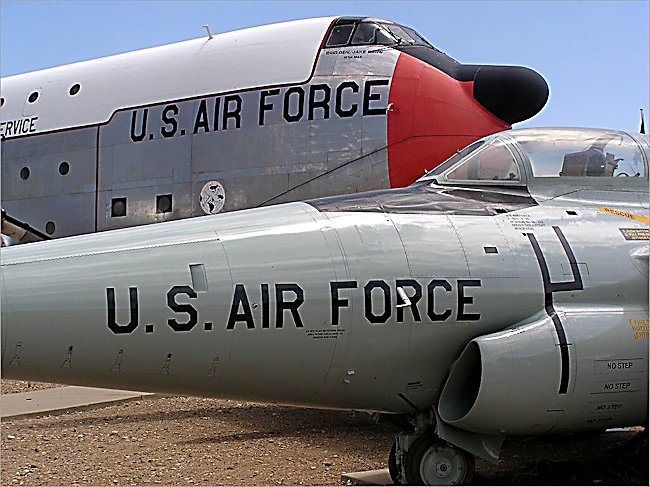Northrop F-89 Scorpion
For a number of years the Northrop F-89 Scorpion High altitude twin-engine interceptor fighter was the main stay of the USAF. It was one of the second generation early American jet fighters. It first flew in September 1948 and entered USAF service in September 1950. it was retired from service in 1950 after ten years service.
It was first introduced in 1950. The F89 carried a pilot in the forward cockpit and a radar operator in the rear who guided the pilot into the attack. It was designed to locate, intercept, and destroy enemy aircraft by day or night under all types of weather conditions. This was at a time when intercontinental bombers first became a threat. The high tail wing gave the plane it's Scorpion name. It also had two very distinctive 300 US gal (1,100 litre) fuel tanks permanently fitted to the wingtips and engine air intakes low on the fuselage. It had four cannons in its nose along with intercept radar.

The later models carried air to air missiles only and extra fuel. F-89 Scorpion was the first combat fighter aircraft armed with the unguided Genie air to air nuclear rocket. It could also carried 104x 2.75 in (70 mm) Mighty Mouse folding-fin aerial rockets or 16x 5 in (127 mm) aerial rockets on underwing racks or 3,200 lb (1,500 kg) of bombs. Its maximum speed was 635 mph (552 knots, 1,022 km/h) at 10,600 ft (3,200 m) and had a service ceiling of 49,200 ft (15,000 m).

Luckily the USAF Northrop F-89 Scorpion was never used in its cold war role. It never had to escort nuclear bombers into Warsaw Pact airspace. With the advent of effective surface to air SAM missiles the chances of bombers getting to their intended target was reduced. Tactics changed to the use of intercontinental ballistic missiles and submarine launched Trident nuclear missiles